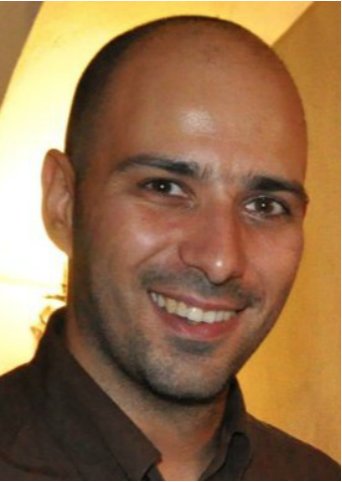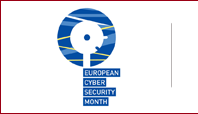2015 SPRITZ Workshop on Future Systems Security and Privacy
The SPRITZ Security and Privacy Research Group at the University of Padua, in collaboration with Clusit (The Italian Association for Computer Security) organizes the "2015 SPRITZ Workshop on Future Systems Security and Privacy". This event is organized within the framework of the European Cyber Security Month (ECSM).
Date: October 23rd, 2015
Schedule: From 9 to 12 am
Address: University of Padua, Department of Mathematics, Via Trieste, 63 - Padova, Italy
Room: Meeting room at 7th floor (stairs B) of Torre Archimede
Live streaming website: http://videoserver1.math.unipd.it:8080/stream.asf
Speakers
-

Veelasha Moonsamy
Post-Doc at Radboud University, NL
Talk title: Mining contrasting permission patterns for clean and malicious applications
Abstract: The Android platform uses a permission model that allows users and developers to regulate access to private information and system resources required by applications. These permissions have proven to be useful for inferring behaviours and characteristics of an application. Existing work have demonstrated several techniques to study ‘required’ permissions; however, little attention has been paid towards ‘used’ permissions. In this talk, I will present a pattern mining algorithm which can be applied to identify contrasting permission patterns that aim to detect the difference between clean and malicious applications. Our empirical results suggest that the permission patterns can capture key differences between clean and malicious applications, which can assist in characterizing these two types of applications during malware triage.
-

Ding Ding
PhD candidate at University of Padua, IT
Talk title: Impact of Country-scale Internet Disconnection on Structured and Social P2P Overlays
Abstract: Peer-to-peer systems are resilient in the presence of churn and uncorrelated failures. However, their behavior in extreme scenarios where massive correlated failures occur is not well-studied. Yet, there have been examples of situations where a country-scale fraction of Internet users have been disconnected from the rest of the network—for instance, when a government cuts connectivity to the outside world as a mechanism for suppression of uprisings. In this paper, we consider the effect of such partitions on topology and routing of structured and social-based unstructured P2P overlays, including a novel social-aware overlay. In particular, we consider nodes within a relatively small fraction of the network (2.5% or fewer Internet users), and study whether users can communicate with their (n-hop away) social neighbors in a peer-to-peer fashion after the partition. We perform an extensive simulation-based analysis to assess the probability for these communications to be possible. In our analysis, we consider both real and synthetic datasets of online social networks. Our results show that structured P2P overlay routability is severely hampered by country-scale partition events. In addition, the proposed social-based unstructured overlay network provides improved routability while maintaining a smaller number of links.
-

Daniele Lain
MSc student at University of Padua, IT
Talk title: Boten ELISA: A Novel Approach for Botnet C&C in Online Social Networks
Abstract: The Command and Control (C&C) channel of modern botnets is migrating from traditional centralized solutions (such as the ones based on Internet Relay Chat and Hyper Text Transfer Protocol), towards new decentralized approaches. As an example, in order to conceal their traffic and avoid blacklisting mechanisms, recent C&C channels use peer-to-peer networks or abuse popular Online Social Networks (OSNs). A key reason for this paradigm shift is that current detection systems become quite effective in detecting centralized C&C. In this talk, we introduce the evolution of C&C channels and modern detection systems. We then present ELISA (Elusive Social Army), a novel type of botnet that conceals C&C information using OSNs accounts of unaware users. In particular, ELISA exploits in a opportunistic way the messages that users exchange through the OSN. We show that several popular social networks can be maliciously exploited to run this type of botnet, and we discuss why current traffic analysis systems cannot detect ELISA. This work appeared on the proceedings of the IEEE Communications and Network Security (CNS) 2015.
-

Giuseppe Cascavilla
PhD candidate at Sapienza University of Rome, IT
Talk title: Revealing Censored Information Through Comments and Commenters in Online Social Networks
Abstract: In this work we study information leakage through discussions in online social networks. In particular, we focus on articles published by news pages, in which a person’s name is censored, and we examine whether the person is identifiable (decensored) by analyzing comments and social network graphs of commenters. As a case study for our proposed methodology, In this paper we considered 48 articles (Israeli, military related) with censored content, followed by a threaded discussion. We qualitatively study the set of comments and identify comments (in this case referred as “leakers”) and the commenter and the censored person. We denote these commenters as “leakers”. We found that such comments are present for some 75% of the articles we considered. Finally, leveraging the social network graphs of the leakers, and specifically the overlap among the graphs of the leakers, we are able to identify the censored person. We show the viability of our methodology through some illustrative use cases.
-

Riccardo Lazzeretti
Post-Doc at University of Siena, IT
Talk title: Computing with private data: when cryptography meets signal processing
Abstract: Cloud providers are offering computational power and storage space, giving the opportunity to the clients to move expensive computation from private computational units to external servers. Moreover data coming from several sources can be collected and analyzed, giving the opportunity to perform extensive studies on large datasets, such as in medical scenarios. On the other hand, privacy related problems are emerging. Private companies are not available to disclose private data. Similarly people do not desire to share private information (health-related information, for example), or be tracked whenever they use their credit card or provide some biometric trait for authentication, althougth they share any moment of their life in social networks. Privacy preserving solutions, such as Homomorphic Encryption and Secure Multi Party Computation techniques, offer the opportunity to non-trusted parties of storing and, above all, processing signals while encrypted. Unluckily SMPC-based protocols are really inefficient, but, thanks to signal processing optimization, important improvements to the protocols can be provided. In this talk some privacy preserving applications are presented, with focus on Biometric Authentication Protocols.
-

Bernardo Magri
PhD candidate at Sapienza University of Rome, IT
Talk title: Security of Signature Schemes against Subversion Attacks
Abstract: We provide a formal treatment of security of digital signatures, more specifically against *subversion attacks* (SAs). Our model of subversion generalizes previous work in several directions, and is inspired by the proliferation of software attacks (e.g., malware and buffer overflow attacks), and by the recent revelations of Edward Snowden about intelligence agencies trying to surreptitiously sabotage cryptographic algorithms. In this vein, we show both positive and negative results for the goal of constructing subversion-resilient signature schemes. *Negative results.* As our main negative result, we show that a broad class of randomized signature schemes is unavoidably insecure against SAs, even if using just a single bit of randomness. This improves upon earlier work that was only able to attack schemes with larger randomness space. When designing our new attack we consider undetectability as an explicit adversarial goal, meaning that the end-users (even the ones knowing the signing key) should not be able to detect that the signature scheme was subverted. *Positive results.* We complement the above negative results by showing that signature schemes with *unique* signatures are subversion-resilient against all attacks that meet a basic undetectability requirement. A similar result was shown by Bellare et al. for symmetric encryption, who proved the necessity to rely on *stateful* schemes; in contrast unique signatures are *stateless*, and in fact they are among the fastest and most established digital signatures available.



